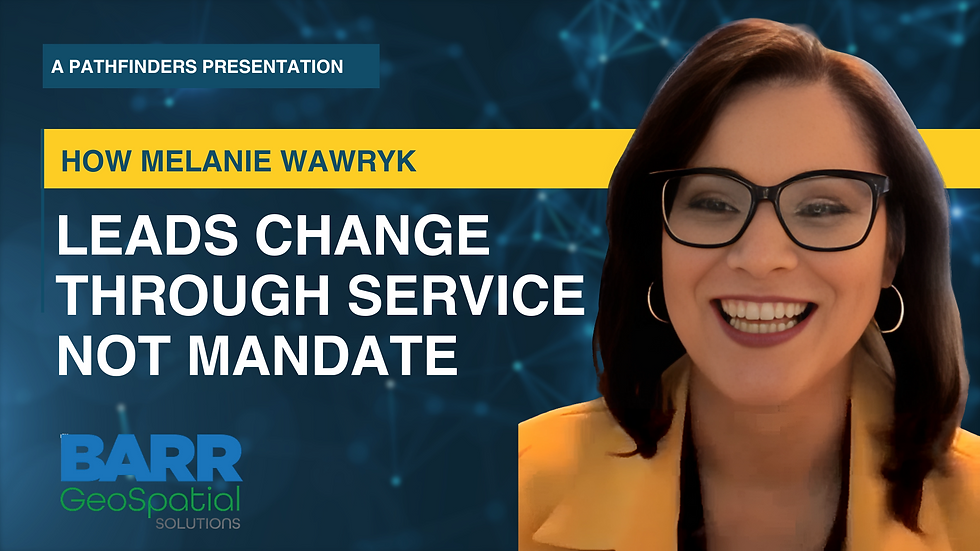James Burn: From Clipboards to Collaboration
- Jeff Lamb

- May 31, 2024
- 2 min read
Updated: Aug 29
When James Burn first stepped into the world of civil engineering, GIS wasn’t even on his radar. He was a geology grad working with test sites, clipboards, and the chaos of paper maps. "There’s got to be a better way to do this," he remembers thinking. That question didn’t just spark his curiosity—it launched a career defined by insight, innovation, and a passion for helping others understand the world through location-based data.
James, now the Manager of the GIS Group at GM BluePlan Engineering, didn’t find GIS so much as it found him. He tells the story of receiving hundreds of water well locations—on paper. “After five, I was kind of like, this is ridiculous.” So he scanned the page, applied optical character recognition, and built a scatter plot layered over a scanned map. “Before I even knew GIS was a thing, I had created a fledgling digital GIS.”
That experiment led James to formal training and a mission: use GIS to bridge the communication gap between data and people. “GIS doesn’t exist in a vacuum,” he says.
“Not everyone’s an engineer or statistician. They need easier ways to see and understand complex information.” Whether it’s showing where a sewer pipe runs beneath a future road project or integrating sewer data with city planning timelines, he sees GIS as “the glue that brings it all together.”
One of his proudest projects involved helping transport massive industrial modules—think 36-wheel, laser-guided trucks—from Calgary to northern Alberta. “It sounded straightforward: move an object from point A to point B. But then you realize, these aren’t your average transport trucks.”
With multiple data formats, varying map projections, and limited tools at the time, James helped develop a customized system that mapped every obstacle along the route, from fences to curves to slopes, shaving months off the planning timeline. “We had a Google truck before Google had a truck,” he laughs.
Despite the technical nature of his work, James believes people skills matter just as much.
“Not everyone wants the same level of detail,” he explains. “It’s like ping pong. Serve up just enough info and wait. If they want more, they’ll ask.”
That ability to listen, adapt, and translate complexity into clarity has made him a trusted mentor and a leader in the GIS community.
Looking back, James is most humbled by what he didn’t know. “Just because we can build something amazing doesn’t mean it’s the right solution for everyone. If a client only has Excel, I’ll find a way to make it work in Excel.” That empathy—paired with his unshakable curiosity—is what drives his impact today.
Whether it's optimizing infrastructure, mentoring his team, or volunteering as a director with BeSpatial Ontario, James is proving that GIS isn't just a tool—it’s a catalyst for collaboration and community.







Comments